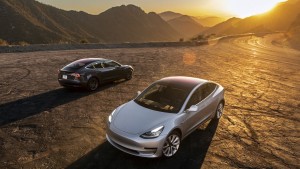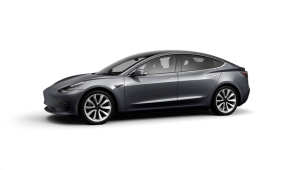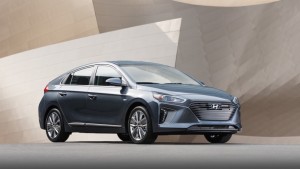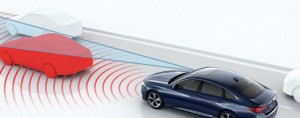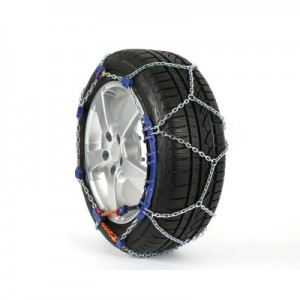Tag Archives: safety
Tesla Stands By Its Claim That The Model 3 Is ‘Safest Car Ever Tested’
Despite a warning from a federal safety regulator last fall that Tesla stops advertising its Model 3 as the “safest car ever tested,” the Palo Alto-based company is standing by its claim.
According to Tesla, Model 3 passengers will have “the lowest probability of injury of all cars the safety agency has ever tested.” This is still on the company’s website. However, documents showed that in at least five instances, the US National Highway Traffic Safety Administration (NHTSA) sent subpoenas to the company, seeking information on crashes involving their vehicles.
In October last year, the same federal agency sent a cease-and-desist letter to Tesla for not complying with the agency’s guidelines in its Model 3 safety assertions. NHTSA apparently chided Tesla, which is led by billionaire Elon Musk, for publishing misleading statements about the safety of the car.
In a letter dated October 31, 2019, Tesla stood by its analysis of NHTSA’s data. Tesla deputy general counsel Al Prescott said that Tesla’s statements “are neither untrue nor misleading.”
“To the contrary, Tesla has provided consumers with fair and objective information to compare the relative safety of vehicles having 5-star overall ratings.”
According to the automaker, 40% of cars have five-star safety ratings from the NHTSA. The advertisement aims to help consumers know the difference in safety features among the cars currently in the market.
A letter from NHTSA chief counsel Jonathan Morrison to Musk on October 17 last year said that this was not the first time that Tesla did not heed the guidelines of the agency “in a manner that may lead to consumer confusion and give Tesla an unfair market advantage.”
Safety groups have criticized Tesla and Musk for being unclear about the capabilities of its Autopilot, a partial autonomous driving feature that falls just short of not needing driver intervention whatsoever.
Tesla Model 3 Gets Five-Star Rating From NHTSA
The 2018 Tesla Model 3 earned a five-star rating from the National Highway Traffic Safety Administration (NHTSA), acing its government safety evaluation. It got five stars overall and in every category it was tested on.
The NHTSA put the Tesla Model 3, a rear-wheel-drive model, through several tests: front driver side, front passenger side, side barrier (driver and rear passenger), side pole, and rollover crashes. Previous Tesla cars, the Model S and the Model X, were also rated five stars by the same agency.
On the other hand, the Insurance Institute for Highway Safety has not released a full rating for the Model 3, though it already got an “Acceptable” headlight score and the top score of “Superior” in front crash prevention. The Tesla Model 3 passed the tests due to its ability to avoid collision in both 12-mph and 25-mph examinations.
It’s no wonder that the Tesla Model 3 was able to pass the NHTSA tests as it is offering a number of advanced safety technologies, including forward collision warning, lane departure warning, and automatic emergency braking.
Tesla has been suffering from a slew of bad press because of its inability to reach the production deadline of the Model 3. As it failed to meet its production targets, it also suffered greatly from building the Model 3 in an assembly line under a giant tent.
Earlier this month, Tesla CEO Elon Musk on Twitter revealed that the company has “gone from production hell to delivery logistics hell.” This was jokingly hinted earlier this week when Musk answered a tweet from Twitter handle @megangale, who posted a photo of several Teslas lined up at the Union Pacific Railroad in SLC.
On Twitter, @megangale said that one of her cars are parked at the Union Pacific Railroad. “I’ve been told I was getting delivery the 8 th , then the 15 th , then the 20 th , then the 22 nd , and now my delivery has been delayed indefinite. Please make this right.”
Musk then replied, “Sorry, we’ve gone from production hell to delivery logistics hell, but this problem is far more tractable. We’re making rapid progress. Should be solved shortly.”
New Suzuki Jimny Gets Measly 3 Stars From Euro NCAP Results
The latest batch of Euro NCAP results has been released where both the Audi A6 and Volkswagen Touareg got the maximum rating of five stars. The Ford Tourneo Connect scored four, but the new Suzuki Jimny got a measly three stars.
The Jimny, which was received positively by the market, received a low score because of its adult occupation protection which was only at 73 percent. The test found out that the driver’s airbag will not quite inflate with enough pressure to stop the driver’s head from hitting the steering wheel rim. There is also a potential for deformity around the front door pillars in the front offset impact test. This resulted in a weak score for the driver’s torso. The front seats are only offering “marginal protection” in the event of a rear impact.
Child protection got a rating of 84 percent but scores were low in the vulnerable road users category because of stiff windscreen pillars. The lowest marks received came from safety tech category. The Jimny even got a horrid 50 percent based on the fact that its autonomous emergency braking system struggled to spot pedestrians in low light. It cannot detect cyclists as well.
Based on the NCAP results, the Audi A6 is the safest car with an adult occupant protection rating of 93 percent and a vulnerable road users percentage of 81. In terms of child protection and safety assist categories, the Touareg slightly outscored the A6. It got 86 percent on the child protection and 81 percent of the vulnerable road users. The Audi A6, on the other hand, got 85 and 76 percent, respectively.
The Ford Tourneo Connect got 92 percent on the adult occupant score but was awarded a four-star rating because it only got a 65-percent rating on the vulnerable road users category.
2019 Hyundai Ioniq Gets New Safety, Infotainment Tech
There will be new safety and infotainment technology for the new lineup of the 2019 Hyundai Ioniq. There will be more voice-recognition features and standard remote charge management for electric and plug-in hybrid models.
The models will get navigation capabilities, including an enhanced, natural-language, server-based voice recognition with a new search database that can detect the locations of charging stations. Some of the new available features are driver attention alert, high-beam assist, and automatic emergency braking with pedestrian detection. These are standard for the SEL trim, which also included lane-keep assist and adaptive cruise control.
To be able to make all of these promises come true, Hyundai had to partner with ChargePoint, which operates more than 32,000 charging locations. What they’ll do is provide Ioniq owners access cards and the ability to locate charging stations through the MyHyundai/Blue Link mobile app. The Ioniq electric and PHEV models will come with Blue Link, Google, and Alexa, which will enable the drivers to monitor the charging schedules even when they are not in the car. The tech would also notify the drivers of possible savings they can get during off-peak hours when electricity prices are down.
There are three variants of the Ioniq—the Hybrid, the Electric, and the Plug-In Hybrid.
The Hybrid has a 58 mpg rating from the 1.6-liter direct-injected engine, 32-kilowatt electric motor and 1.56 kWh lithium-ion polymer battery. The Electric variant has 136 mpge rating and can go 124 miles from one charge. The power comes from its 28.0 kWh lithium-ion polymer battery. The Plug-In Hybrid, on the other hand, offers 29 miles of uninterrupted driving for electric power. It uses a 1.6-liter direct-injected Atkinson-cycle four-cylinder mated to a six-speed dual-clutch transmission, a 44.5 kW electric motor, and 8.9 kWh battery.
Pricing hasn’t been announced yet for the 2019 model, though it will be available starting this summer.
All Honda Cars Starting 2022 Will Have Honda Sensing Safety
Starting 2022, all Honda models will be equipped with the Honda Sensing Safety, a suite of features that will make it easier and safer for drivers to navigate and manage the brand’s cars. Though it is a long way from now, it’s nice to know that the Japanese automaker is making strides to make accessibility to safe cars a priority.
Right now, there is over one million vehicles in the United States fitted with the Honda Sensing Safety. That number is going to pale in comparison to Honda’s plans to have the system a standard equipment for all its vehicles starting 2022.
The Honda Sensing Safety system offers a suite of advanced safety and driver-assisted technologies that will supposedly make it easier and safer for Honda owners to drive their cars. The system includes quite a huge number of safety tech features, including a collision mitigation braking system (CMBS) that can apply brake pressure when an unavoidable collision is sensed.
It also has the lane keeping assist (LKAS), adaptive cruise control (ACC), and road departure mitigation (RDM), all of which assist the drivers in adjusting steering and braking if and when the cars cross detected lanes without signaling.
Henio Arcangeli Jr., senior vice president of the American Honda Automobile Division, said in a statement that Honda’s dream is to create a “collision-free mobile society.” The Honda Sensing Safety will play a critical and pivotal role in order to achieve that dream. Honda’s unofficial target is to reduce the number of collisions in the next three to four years.
The safety suite is now standard on only a handful of Honda models— 2018 Clarity Plug-in Hybrid, 2018 Clarity Fuel Cell, 2017 Clarity Electric, 2018 Accord, and 2018 Accord Hybrid. It will also come standard on the 2019 Insight Hybrid. Honda Sensing Safety is only available as an option for the Fit, Civic, CR-V, Pilot, Odyssey, and Ridgeline.
Top 4 Signs Saying You Need to Fit Snow Chains in Your Cars
Snow chains are one of the most useful inventions introduced to driving. These devices help provide maximum traction to the tires of a vehicle when it is being driven through snow and ice. So what are the key signs that say when you should install these?
Check out these four helpful tips that will let you determine when to fit the snow chains to your cars:
1. Check Out Local Regulations
For the sake of public safety, there are laws or ordinances that indicate when to attach snow chains to your auto. Be sure to familiarize yourself with them to protect yourself, other motorists, properties and pedestrians. It will also keep you away from certain sanctions for non-compliance with the road regulations as stated by the law.
2. Mountain Climbs
Some national parks have signage or officers that will tell you when it is time to equip your snow chains. In the absence of such, if you see that the road ahead is covered in thick snow or you have noticed that your tires are having trouble getting a grip on the surface, it’s about time to chain up your ride.
3. Muddy Areas
While snow chains, as the name implies, is the best tool in gaining traction in snowy or icy roads, these come in handy too when driving through muddy terrain. Some might have noticed that a number of logging skidders operating in areas susceptible to heavy rains which eventually result to muddy grounds fit their tires with chains. Make sure though to get snow chains with plenty of cross links when choosing the product that can aid you in traversing muddy soil.
4. Grass or Grounds Covered by Dry Leaves
A nice hack when you are having trouble gaining a grip on areas covered in flora or dry leaves is by installing snow chains on your tires. Again, see to it that you are using snow chains with a lot of cross links to optimize your traction.

